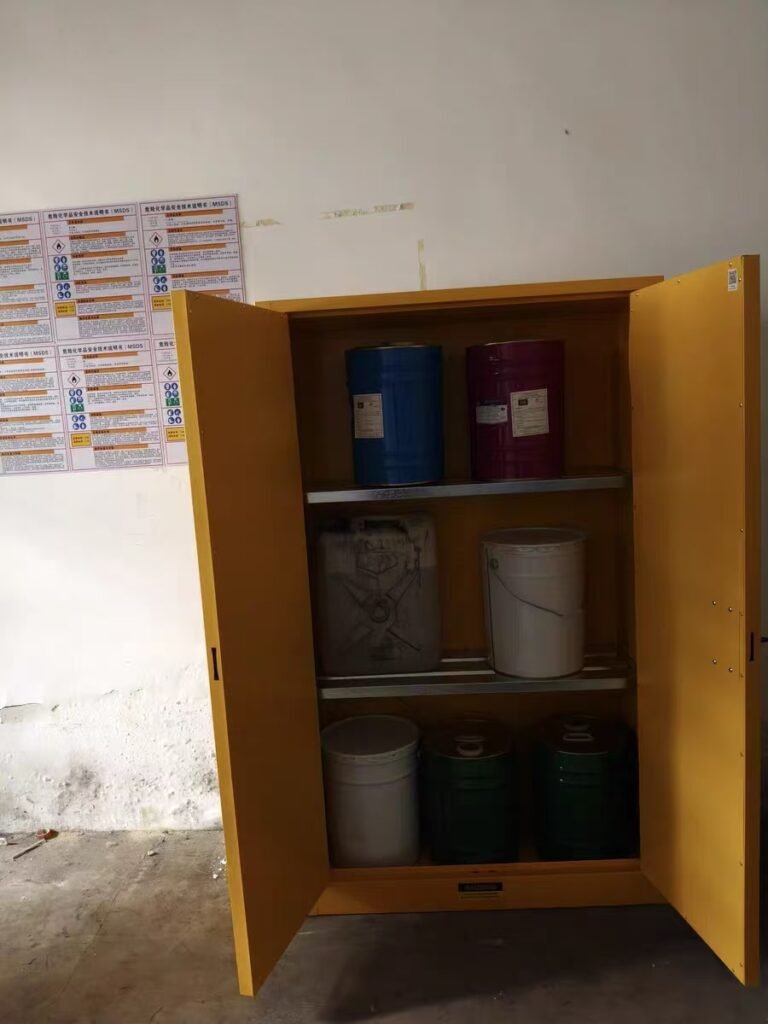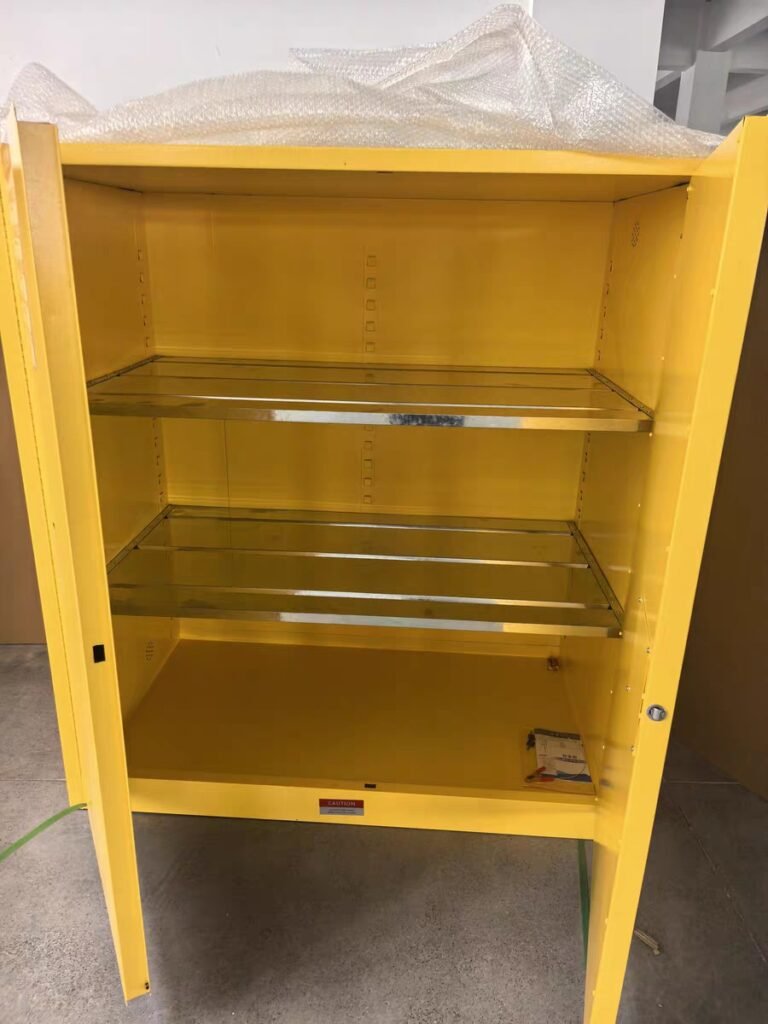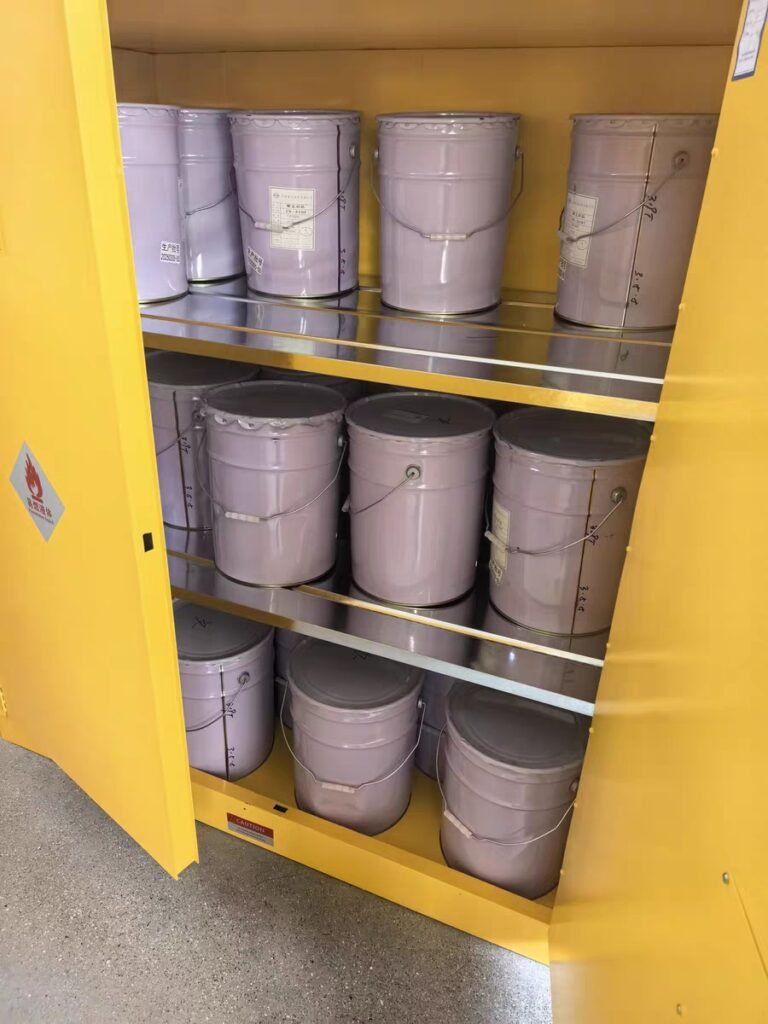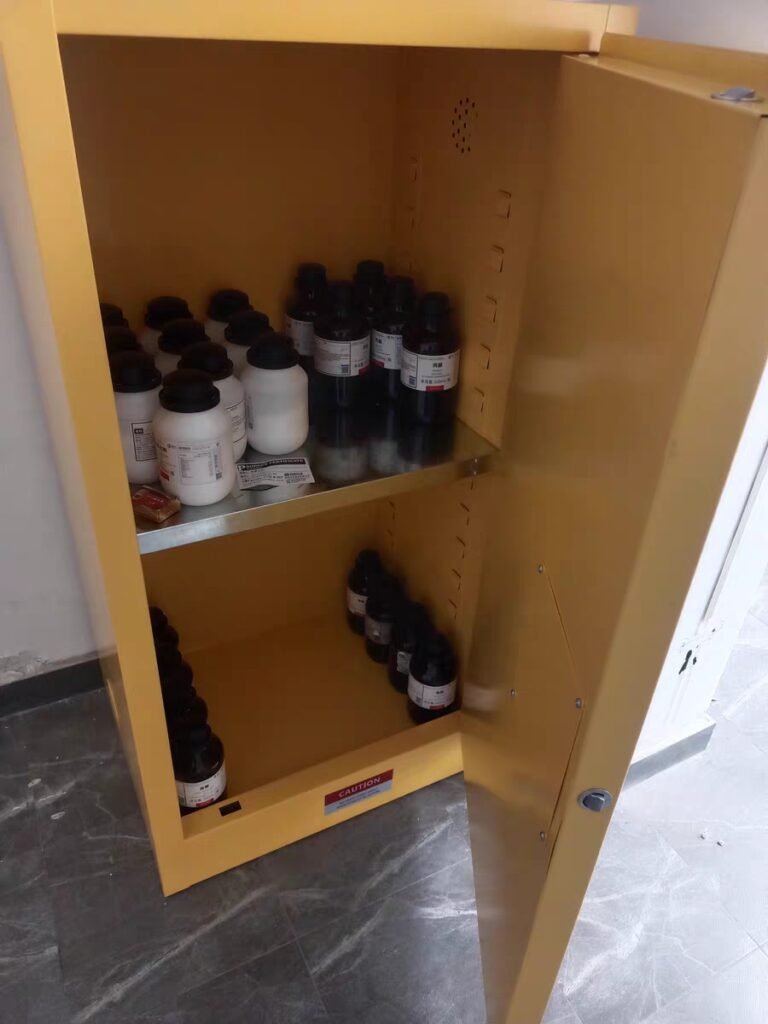Laboratory Safety Storage: Boston Factory 45/60/90/110 Gallon Flammable Cabinets for Hazardous Chemical Protection
The Critical Importance of Proper Flammable Storage in Laboratory Settings
Laboratories across various industries handle numerous flammable and hazardous chemicals daily, making proper storage solutions essential for maintaining safety standards and regulatory compliance. In Boston’s thriving research and industrial sectors, the need for reliable flammable storage cabinets has never been more critical. These specialized storage units serve as the first line of defense against potential fire hazards, protecting both personnel and valuable research materials.

Understanding Flammable Storage Cabinet Requirements
Flammable storage cabinets are engineered to contain and control the risks associated with storing combustible liquids and chemicals. These cabinets must meet stringent safety standards set by organizations such as OSHA (Occupational Safety and Health Administration) and NFPA (National Fire Protection Association). The primary purpose is to prevent external fires from reaching the stored chemicals for a specified period, typically 10 minutes, allowing time for evacuation and emergency response.
Boston Factory’s range of flammable cabinets, available in 45, 60, 90, and 110-gallon capacities, addresses the diverse needs of laboratories and industrial facilities. Each size is designed to accommodate different storage requirements while maintaining the same high safety standards across the product line.
Technical Specifications and Safety Features
The construction of quality flammable storage cabinets involves several critical safety features. Double-walled steel construction with 1.5 inches of air space between walls provides essential insulation against fire exposure. The doors are typically equipped with self-closing mechanisms that ensure the cabinet remains sealed when not in use, preventing the spread of flames in case of emergency.
Ventilation systems are another crucial component, designed to allow fumes to escape safely to the exterior while maintaining the cabinet’s fire-resistant integrity. Grounding connections prevent static electricity buildup, which could ignite flammable vapors. Additionally, leak-proof sumps contain any spills that might occur within the cabinet, preventing environmental contamination and reducing slip hazards.

Size Options and Their Applications
The 45-gallon flammable cabinets are ideal for smaller laboratories or facilities with limited space requirements. These compact units provide sufficient storage for essential flammable materials while maintaining a smaller footprint, making them suitable for research labs, educational institutions, and smaller industrial operations.
The 60-gallon models offer increased capacity while remaining relatively compact, making them popular choices for mid-sized laboratories and manufacturing facilities. These cabinets strike a balance between storage capacity and space efficiency, accommodating a broader range of chemicals without requiring excessive floor space.
For larger operations, the 90-gallon cabinets provide substantial storage capacity while maintaining compliance with safety regulations. These units are commonly found in industrial laboratories, chemical manufacturing plants, and research institutions with extensive chemical inventories.
The 110-gallon flammable cabinets represent the maximum allowable capacity under many safety regulations for a single storage unit. These large-capacity cabinets are designed for facilities with significant flammable material storage needs, such as large-scale manufacturing plants, research universities, and industrial laboratories.

Fire and Explosion Protection Mechanisms
The fire protection capabilities of these cabinets are engineered to meet rigorous testing standards. The double-walled construction with fire-resistant insulation creates a thermal barrier that prevents the internal temperature from reaching the auto-ignition point of stored chemicals during external fire exposure.
Explosion protection features include pressure-relief mechanisms that safely vent internal pressure buildup while preventing flame propagation. The self-closing doors are equipped with fusible links that automatically close the cabinet at temperatures around 165°F (74°C), sealing the contents from external fire exposure.
The grounding and bonding systems prevent static electricity discharge, which could ignite flammable vapors. These features are particularly important in laboratory environments where multiple operations might create static electricity through equipment movement or material transfer.
Laboratory Applications and Compliance Considerations
In laboratory settings, proper segregation of chemicals is essential for safety. Flammable storage cabinets help laboratories organize chemicals according to compatibility groups, reducing the risk of dangerous reactions between incompatible substances. The different size options allow laboratories to implement proper segregation strategies based on their specific chemical inventories.
Compliance with OSHA Standard 1910.106 and NFPA Code 30 is mandatory for facilities handling flammable liquids. Boston Factory’s cabinets are designed to meet or exceed these standards, providing laboratories with storage solutions that ensure regulatory compliance while maintaining operational efficiency.
Laboratory safety officers must consider several factors when selecting appropriate cabinet sizes, including the types and quantities of flammable materials used, the frequency of access required, and the available space within the laboratory. The range of sizes available allows for customized solutions that address these specific requirements.
Installation and Maintenance Best Practices
Proper installation of flammable storage cabinets is crucial for their effectiveness. Cabinets should be placed in well-ventilated areas away from ignition sources and exit routes. The installation must ensure that the cabinet remains level and that all safety features, including self-closing mechanisms and grounding connections, function correctly.
Regular maintenance is essential to ensure continued safety compliance. This includes inspecting door mechanisms for proper operation, checking grounding connections, and ensuring that ventilation systems remain unobstructed. Any damage to the cabinet structure or safety features should be addressed immediately to maintain the integrity of the fire protection system.
Labeling requirements must also be maintained, with clear identification of the cabinet’s contents and appropriate hazard warnings. This information is critical for emergency responders who need to understand the risks present in the laboratory environment.

Training and Safety Protocols
Even with proper storage equipment, comprehensive safety training is essential for laboratory personnel. Workers must understand the proper procedures for storing and handling flammable chemicals, including the correct use of storage cabinets and emergency response protocols.
Training should cover the specific features of the flammable storage cabinets in use, including operation of self-closing doors, proper ventilation procedures, and spill response measures. Regular refresher training ensures that all personnel remain current with safety protocols and regulatory requirements.
Emergency response plans should include specific procedures for incidents involving flammable storage cabinets, including evacuation routes, fire suppression methods, and first aid measures. These plans should be regularly reviewed and updated to reflect changes in laboratory operations or chemical inventories.
Future Trends in Flammable Storage Technology
The field of flammable storage continues to evolve with advancements in materials science and safety technology. Future developments may include smart monitoring systems that provide real-time information about cabinet conditions, including temperature, humidity, and potential leaks. These systems could integrate with building management systems to provide early warning of potential hazards.
Sustainability considerations are also driving innovation in flammable storage cabinet design. Manufacturers are exploring more environmentally friendly materials and manufacturing processes while maintaining the high safety standards required for these critical safety products.
The integration of digital technologies may also enhance inventory management and regulatory compliance, with automated tracking systems that monitor chemical usage and storage conditions while maintaining detailed records for compliance reporting.

Conclusion: Essential Safety Infrastructure
Flammable storage cabinets represent essential safety infrastructure for any laboratory or facility handling combustible materials. The range of sizes available from Boston Factory—45, 60, 90, and 110 gallons—provides flexibility for different operational needs while maintaining consistent safety standards across all models.
As laboratory safety continues to evolve, the importance of proper flammable storage remains constant. These cabinets serve as critical components of comprehensive safety programs, protecting personnel, property, and research activities from the devastating effects of chemical fires.
For Boston’s research and industrial community, investing in quality flammable storage solutions is not just a regulatory requirement but a fundamental aspect of responsible laboratory management. The proper selection, installation, and maintenance of these safety cabinets contribute significantly to creating safe working environments where scientific innovation and industrial productivity can thrive without compromising safety standards.
Includes size options: “45/60/90/110 Gallon”
